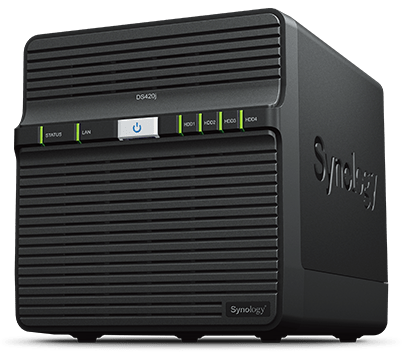I’ve got a shiny new Synology DS420j, and I’m in the process of re-implementing the wheels of computer suffering that I call my backup system on it. Part of this is setting up rsnapshot to create point-in-time snapshots of my backups, so I can rewind back to an old version of my data.

There are plenty of instructions on how to setup rsnapshot using Docker on the higher-end Synology models, but when you’re shopping at the bottom of the barrel you don’t have that option. We’ve got to install rsnapshot directly on the Synology - the most cursed Linux environment ever1.
All the instructions I could find were quite old, and the landscape seems to have changed. Synology have changed their package format, so old packages cannot be installed on newer DSM versions (according to this German forum post) which means anything that tells you to install pages from cphub.net probably doesn’t work any more. ipkg is also no longer maintained and has been replaced by Entware. Once I knew that, the process was relatively straightforward.
Preamble
You probably need to enable the rsync service, enable ssh, etc for this to work. I’m assuming that you’ve got a Synology already setup that you can SSH into and sync files to from your other computers. If you don’t, then you should sort that out and then come back. I’ll wait.
Install Entware
Entware have detailed installation instructions on GitHub. Remember that the DS420j is armv8, check yours with cat /proc/cpuinfo.
Once you’ve yolo-run the various install scripts and added enough backdoors into the device that holds all your most valuable information, you just need to add the scheduled tasks to keep Entware from being removed (take note of this, we’ll use this again later for rsnapshot).
Setup rsnapshot
Now we can use opkg to install rsnapshot:
$ sudo opkg install rsnapshot
And then edit /opt/etc/rsnapshot.conf to taste. For example here’s mine:
config_version 1.2
snapshot_root /volume1/rsnapshot
# Commands
cmd_cp /bin/cp
cmd_rm /bin/rm
cmd_rsync /usr/bin/rsync
cmd_ssh /usr/bin/ssh
cmd_logger /usr/bin/logger
cmd_du /usr/bin/du
cmd_rsnapshot_diff /opt/bin/rsnapshot-diff
# Backups
retain daily 28
retain weekly 26
# Opts
verbose 2
loglevel 3
logfile /var/log/rsnapshot.log
lockfile /var/run/rsnapshot.pid
backup /volume1/Backups Backups/
Now check that the config is valid:
$ sudo rsnapshot configtest
Syntax OK
Schedule rsnapshot
We could use cron to schedule our rsnapshot job, but since Synology isn’t quite normal Linux, I think it’s best to use the built-in GUI rather than install more custom packages.
The task is fairly simple, just click “Create” > “Scheduled Task” > “User-defined script” and setup:
- Task: “rsnapshot daily”
- User: root
- Schedule: every day, probably sometime when you’re not likely to be using the Synology. I set mine to run at 2am.
- Task Settings: “run command” should be something like
/opt/bin/rsnapshot daily(I used the full path Just In Case™ there is$PATHweirdness).
Save the task and accept the dialog that tells you you’ve voided your warrantee.
The task will be skipped if an instance is already running, you can use the Synology UI to start it ad-hoc, and you can easily see the status in the “View Result” screen. Which is a bit more user-friendly than cron.
This setup has successfully run on my Synology once (so far). Whether it will continue to work after reboots and software updates remains to be seen.
-
citation needed. ↩